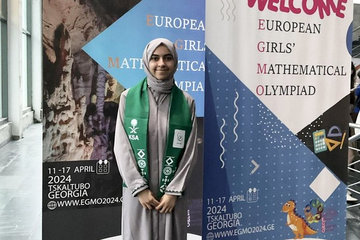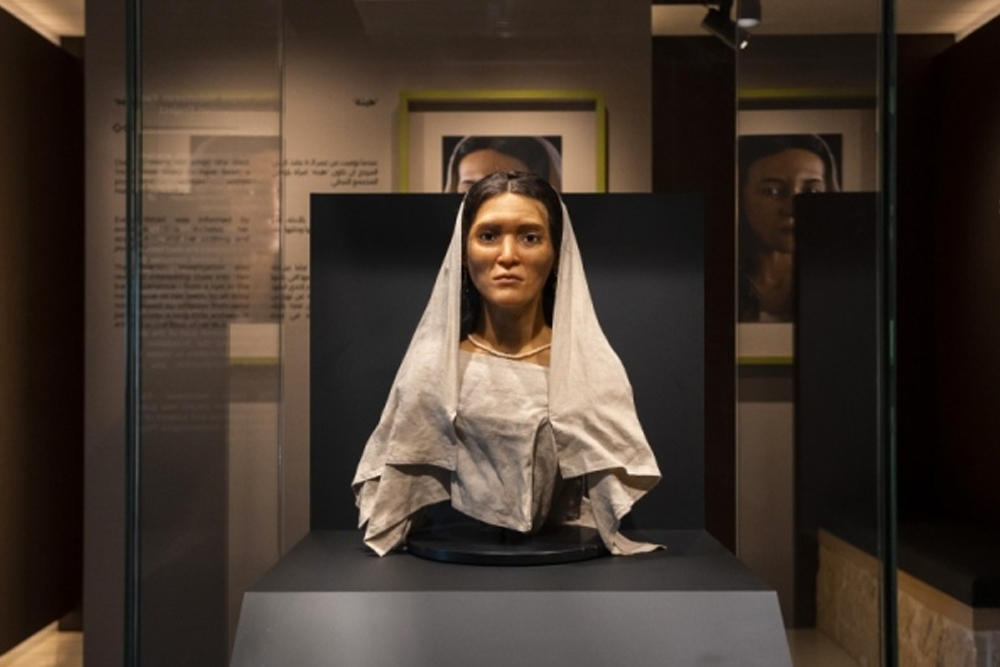
Al Ula is a place of wonderment and was home to some of the world’s ancient civilizations, including the Nabataeans. As the site pulls in curious visitors and tourists, a demand for knowledge also follows. Teams of archaeologists, academics, and specialists in the fields of forensic science and model-making have recently completed the first known digital and physical reconstruction of a Nabataean woman discovered at Hegra. The Nabataean woman, Hinat, is believed to have been a renowned and respected woman who died approximately in the first century BC and remained in a Hegra tomb for over 2000 years.
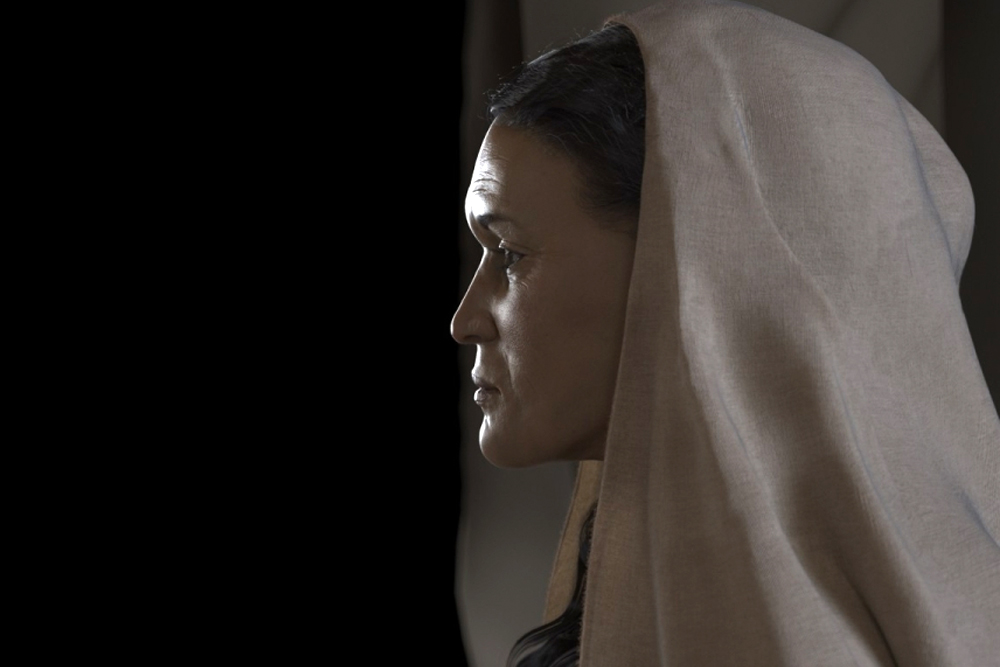
Hinat was reconstructed by the specialists and the statue has been unveiled at the Hegra Welcome Centre in Al Ula. Hegra is a UNESCO World Heritage Site that was once a buzzing city for this north Arabian kingdom that dominated the historic Incense Road. The unveiling of Hinat comes in the 15th year, since Hegra was inscribed as the first UNESCO World Heritage Site in Saudi Arabia.
Aside from reconstructing the Nabataean woman, the Royal Commission for Al Ula (RCU) is hoping for a number of important advances in archaeology across the Al Ula area as the site is host to “the secrets of the past.” Al Ula is also home to an oasis and valley that were once home to communities and civilizations for thousands of years.
Al Ula was a highly important place along the routes of trade that offered invaluable incense, spices, among several other luxury commodities. The site has ancient artefacts from every major period from prehistory to the present day, including the site of Hegra, a significant city of the Nabataean Kingdo
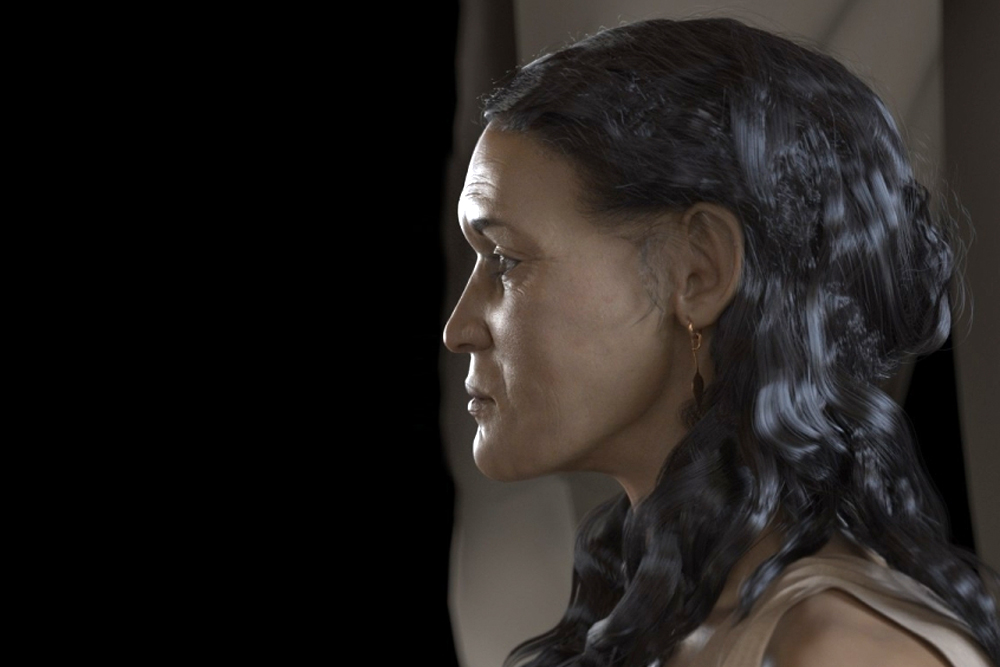
Hinat, as she is referred to by the archaeologists that discovered her, was exhumed from one of Hegra’s tombs in 2008. Excavations of the tomb led to discoveries of 80 individuals that were entombed there, and the pathology from making these discoveries suggest that some were blood relations.
Hinat’s skeleton was near complete when she was discovered along with an inscription on the tomb which read, “This is the tomb that Hinat, daughter of Wahbu, made for herself and her children and descendants forever”.
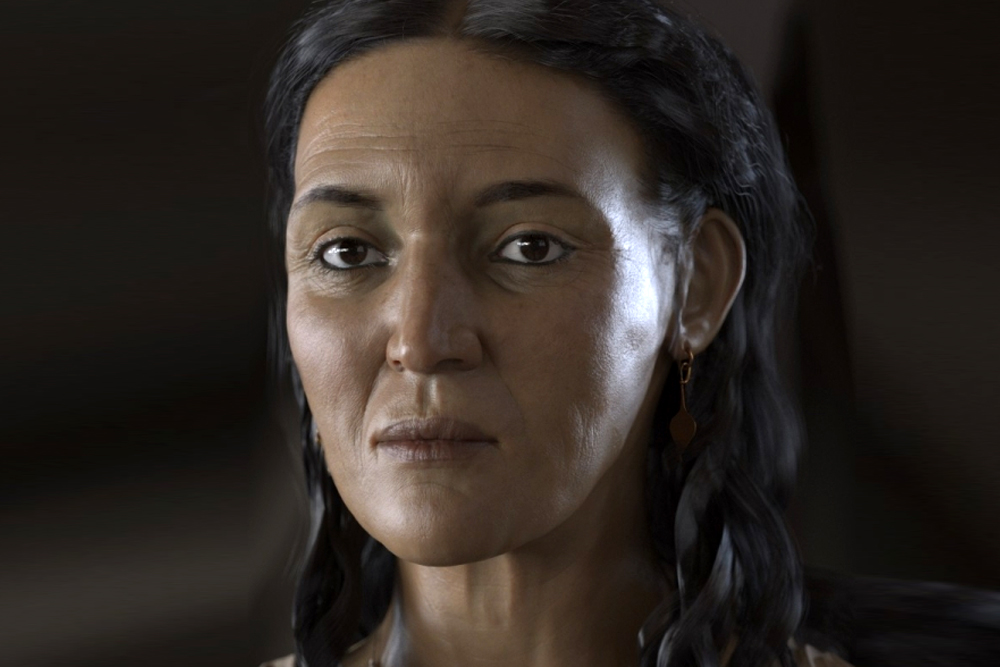
A one-day scientific roundtable event that bought together leading experts on Hegra, discussed the Nabataeans, and the archaeology of Al Ula, as well as the appearance of Hinat, her potential status in society, and what she may have worn. These discussions established a guide for the accuracy and character of the reconstruction and references for imagery, clothing, hair, and jewelry.
Narrative Experience Expert at RCU Leila Chapman said in a statement, “The opportunity for our visitors to come face to face with a Nabataean woman at the actual site of Hegra – where she lived, and was honored by her family – is hugely exciting. We are especially excited that AlUla’s people will see this recreation of their ancient ancestor.”




